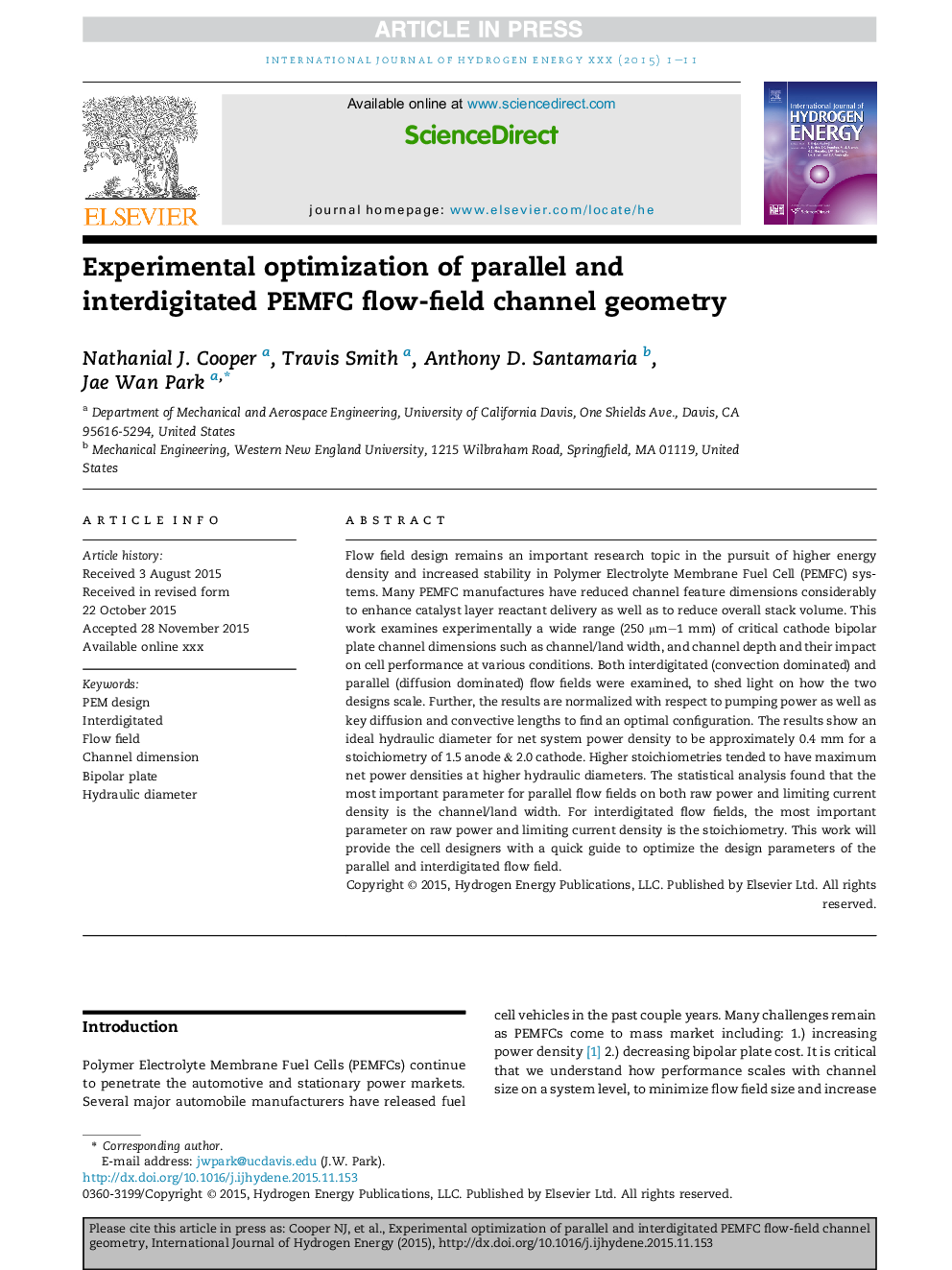| Article ID | Journal | Published Year | Pages | File Type |
|---|---|---|---|---|
| 7712873 | International Journal of Hydrogen Energy | 2016 | 11 Pages |
Abstract
Flow field design remains an important research topic in the pursuit of higher energy density and increased stability in Polymer Electrolyte Membrane Fuel Cell (PEMFC) systems. Many PEMFC manufactures have reduced channel feature dimensions considerably to enhance catalyst layer reactant delivery as well as to reduce overall stack volume. This work examines experimentally a wide range (250 μm-1 mm) of critical cathode bipolar plate channel dimensions such as channel/land width, and channel depth and their impact on cell performance at various conditions. Both interdigitated (convection dominated) and parallel (diffusion dominated) flow fields were examined, to shed light on how the two designs scale. Further, the results are normalized with respect to pumping power as well as key diffusion and convective lengths to find an optimal configuration. The results show an ideal hydraulic diameter for net system power density to be approximately 0.4 mm for a stoichiometry of 1.5 anode & 2.0 cathode. Higher stoichiometries tended to have maximum net power densities at higher hydraulic diameters. The statistical analysis found that the most important parameter for parallel flow fields on both raw power and limiting current density is the channel/land width. For interdigitated flow fields, the most important parameter on raw power and limiting current density is the stoichiometry. This work will provide the cell designers with a quick guide to optimize the design parameters of the parallel and interdigitated flow field.
Related Topics
Physical Sciences and Engineering
Chemistry
Electrochemistry
Authors
Nathanial J. Cooper, Travis Smith, Anthony D. Santamaria, Jae Wan Park,
